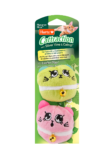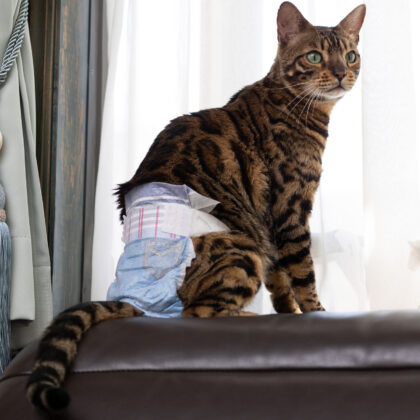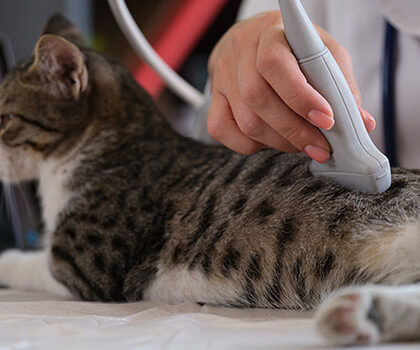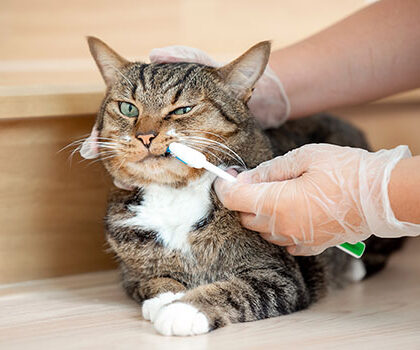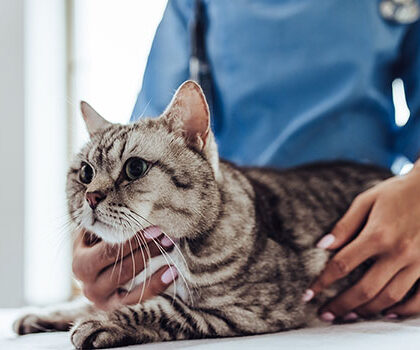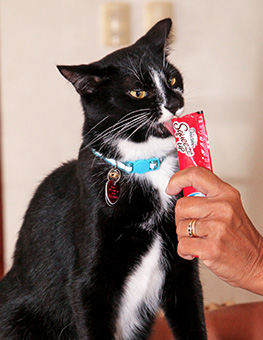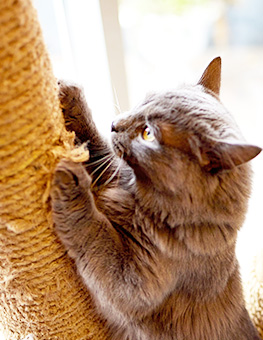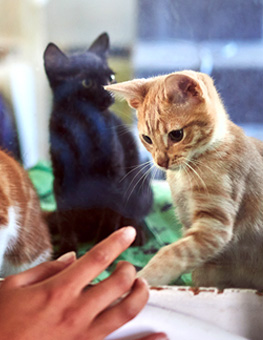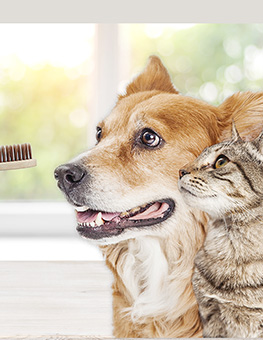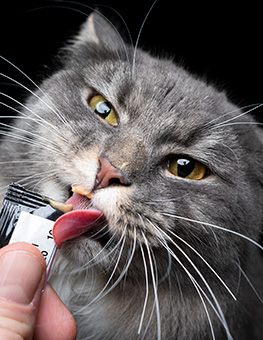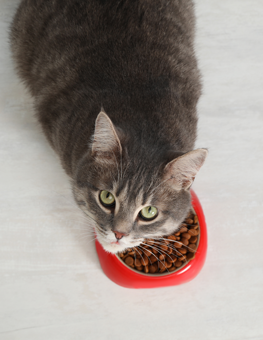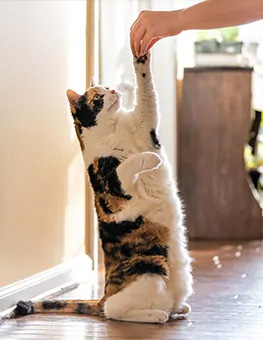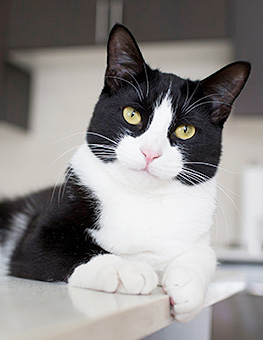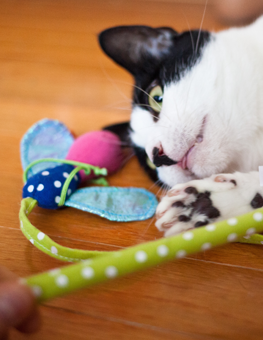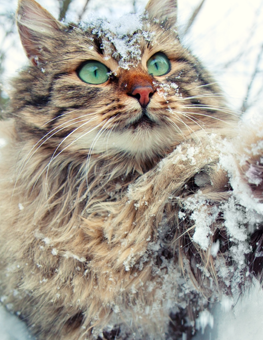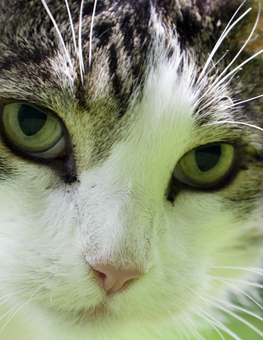How to Help Your Cat Lose Weight
Feline obesity is more prevalent in the United States than ever, with an estimated 50% of all cats seen at veterinary clinics being overweight or obese*. It is the most common–and most preventable–nutritional disorder among cats, and pet owners should take helping their cats lose weight seriously.
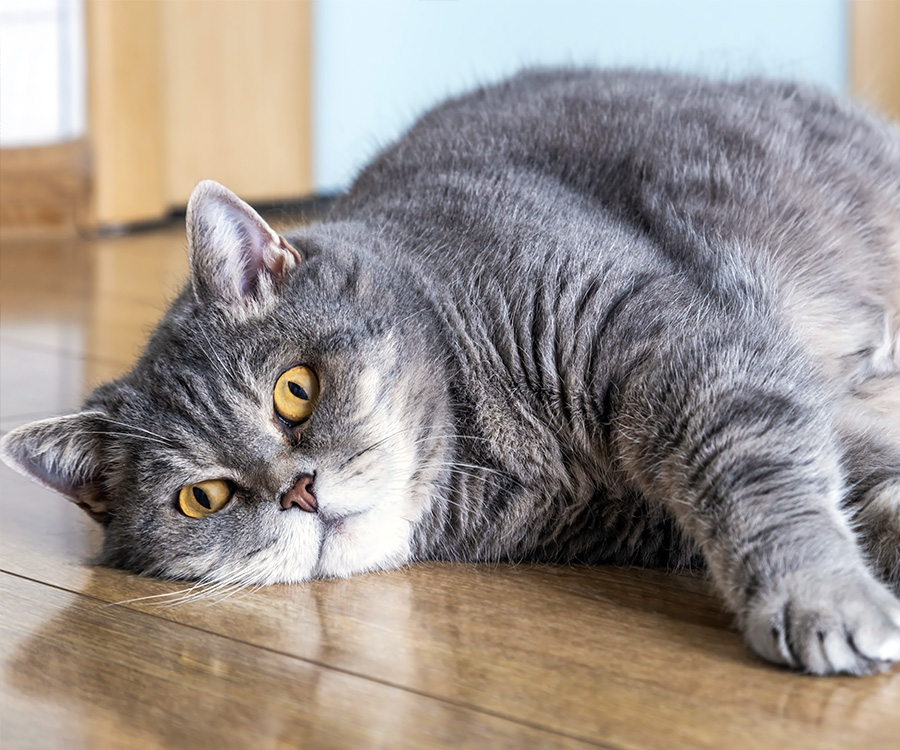
Feline obesity is more prevalent in the U.S. than ever. Pet owners should take helping their cats lose weight seriously.
If not controlled, obesity can lead to other, more serious health issues such as diabetes, arthritis, or heart disease. With many pet owners spending more time at home with the pandemic, it's common for pets to have gained weight from being fed more and given more treats. Thankfully, there are many ways to make putting your cat on a diet fun, both for you and your cat! Here are several tips and tricks to get your cat snacking less and moving more:
Healthy Diet
The first step in treating your overweight cat is to talk to your veterinarian about an appropriate feeding plan. You should never make major changes in your cat's diet without your vet's guidance, but in general, the average 10-pound cat should consume about 257 calories of cat food per day**. Your vet may recommend a specific lower-calorie brand or even a prescription food specifically designed for weight loss. He will also tell you exactly how much to feed your cat to promote healthy weight loss.
The best way to feed your overweight cat is through frequent, small meals given several times throughout the day. This cuts down on begging, as a cat who is used to being free-fed and is suddenly cut off to just two meals per day is very likely going to protest his new situation. Spreading out those limited calories over the day allows your cat to nibble all day but in a much more controlled manner.
Using Food Puzzles
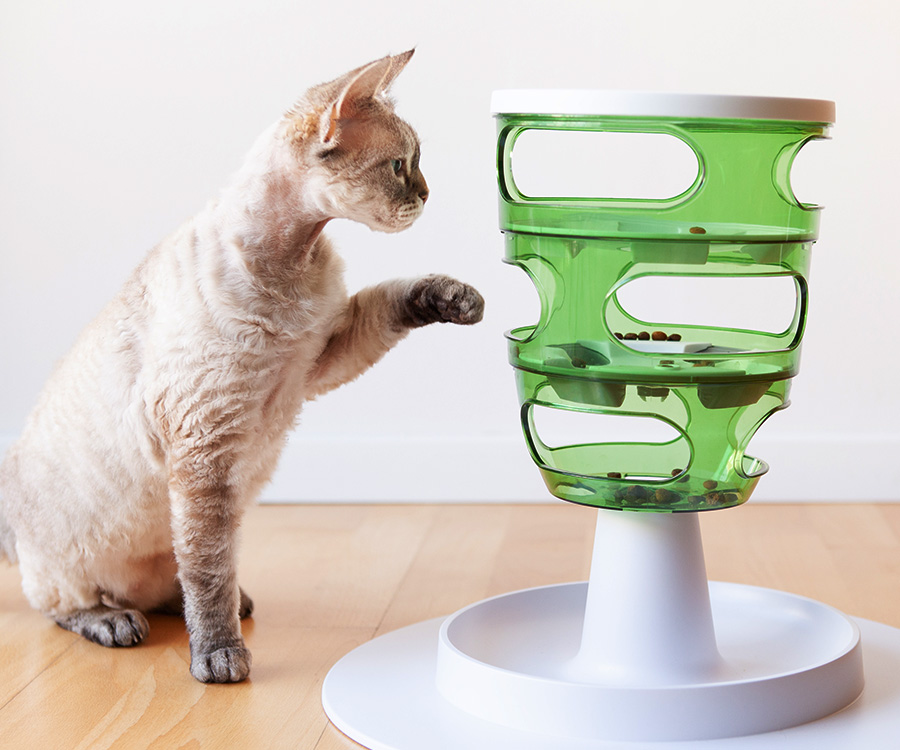
Ditch the bowl and begin feeding your cat his daily calories through foraging toys and food puzzles.
For overweight cats, it's a great idea to ditch the bowl and begin feeding your cat his daily calories through foraging toys and food puzzles. These toys come in many forms, from stationary puzzles that require your cat to dig or push to reach the food inside, to balls that must be chased and batted around in order to dispense the food. When making the switch, be careful to monitor that your cat can solve the puzzle without becoming too frustrated or giving up. It should be challenging and get his body moving, but not so much that your cat is no longer enjoying the game.
If food puzzles aren't your cat's forte, he may enjoy chasing his kibble or even a very limited portion of treats across the floor. If all else fails, feed him his meals in different parts of the house, not always the same spot. For example, if he is downstairs, feed him upstairs so he has to climb the stairs to get his meal.
Play Therapy
The easiest way to get your cat moving is by playing with him. Setting aside 15 minutes in the morning and evening to play with your cat will make a big difference in his weight and energy level over time. Cats are predators, so awakening your overweight cat's prey drive will help to combat his current sedentary lifestyle and help get him back to a proper cat weight.
Your cat may not want to play with you at first. Think about it from his perspective. If he's carrying around a couple of extra pounds, it's going to be harder for him to get up and move. It may even be painful if his obesity has caused osteoarthritis. Experiment with different types of toys. If the mouse on a string doesn't do it for him, try the butterfly on the wire, or the long, felt strip that wiggles like a snake. At first, he may just watch the toy and occasionally bat at it while lounging on his side. But then, one day, you'll see him get up and pounce, and know that your weight loss plan is working! Don't give up and keep encouraging him!
Providing Vertical Space
Although cats are predators, they are unique animals in that they are also prey. This means, for cats, it's especially important to provide them with opportunities to climb and get up high. Cats feel more confident and happier when they have vertical space to use as a vantage point and survey what's going on around their territory from the safety of height.
Your overweight cat may not be jumping up your shelves to the ceiling at first, so like anything else, start slow. Does he like to sit in the window and watch the birds, but you've noticed he has a hard time getting up there? Consider giving him pet stairs, or maybe strategically placing an end table under the window so that he has a "step" up to it. Encouraging your cat to climb without overdoing it can help him to burn calories.
You can also spread out his resources like food, toys, and litter box on multiple floors in your home to encourage him to go up and down the stairs to get to his stuff. However, always monitor your cat's comfort level and be sure that you are not pushing him too much. If he is unwilling to climb stairs to get to his food or litter, don't force him. Take a step back and try again after he's lost a pound or two.
Leash Walking
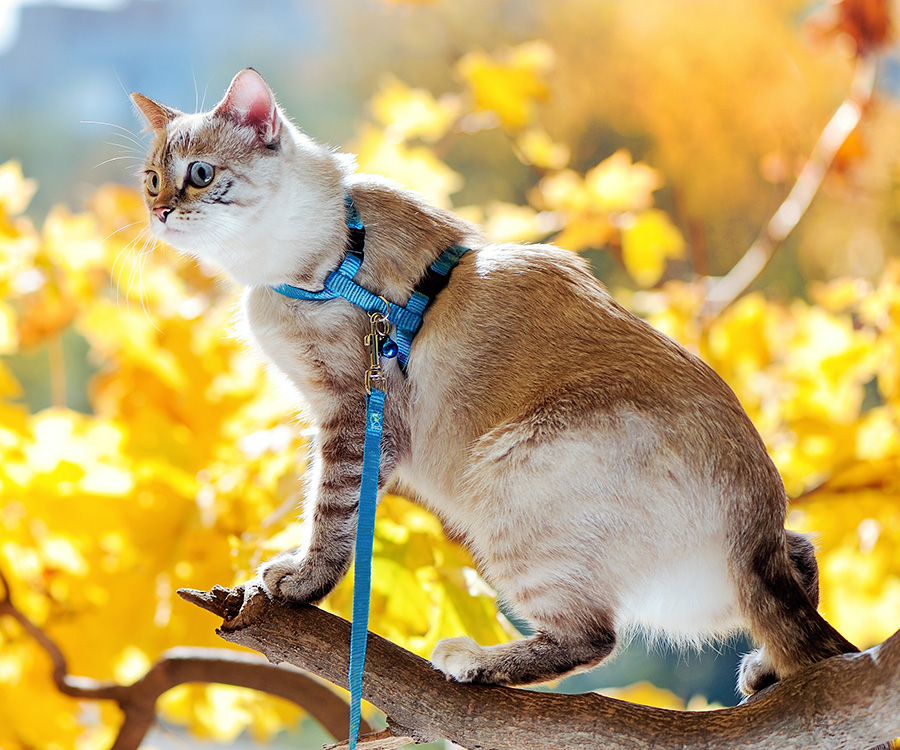
Walking on a harness and leash can help your cat lose weight.
Training your cat to walk on a harness and leash can be a bit of a project, but is entirely possible! It should be done slowly and gradually to help your cat adjust to it and build positive associations with it. Begin by just draping the harness over the cat's back without clipping anything. Reward your cat with treats (you could set aside a portion of his daily calories for this) or playtime. Over time, you'll clip the neckpiece, then the belly piece, and ask him to wear it longer and longer. At first, he may lay down and refuse to move. If this is the case, only ask him to wear it for a minute or two, praise him and reward him, and then take it off.
Once he is comfortable just wearing the harness, which may take several weeks, you can add the leash. Toss treats or drag a toy in front of your cat to encourage him to walk with you. At first, keep your walks short and inside the house only. When you've really got the leash walking down, then you can try to go outside! Remember to keep an eye on your cat's body language throughout the process and stop if he becomes stressed. There are lots of scary things outside: dogs, sirens, noisy trucks, and more. This is supposed to be fun for your cat, so go at his pace!
With some hard work on your part (and your cat's part, too) you should start seeing a slimmer kitty within a few months. It's totally possible to get him back to his proper cat weight with a little time and effort.
References: *Obesity | Cornell University College of Veterinary Medicine
**"Table 15-12." Nutrient Requirements of Cats and Dogs, Nat. Acad. Press, Washington, WA, 2006, pp. 366–367.




